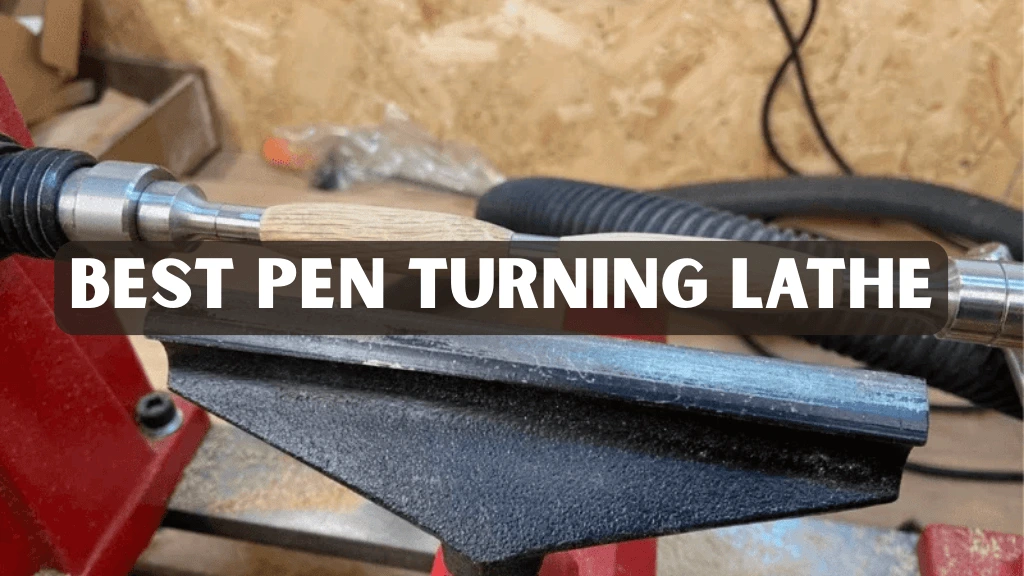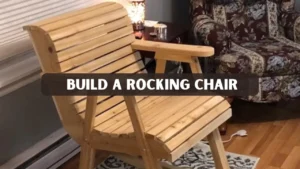Turning pens is one of the most rewarding and precise woodturning projects, blending creativity with craftsmanship. Hobbyists often enjoy the process as a relaxing and artistic pastime, while professional woodworkers see it as an opportunity to create high-quality, customized writing instruments that can even become part of a business. Investing in the best pen turning lathe is essential for achieving accuracy, smooth finishes, and long-lasting results.
In this guide, we will explore the top lathes for pen turning, compare features, and provide expert tips based on both personal workshop experience and trusted industry sources. By blending practical knowledge with authoritative insights, this article aims to help you make the right choice with confidence.
Why You Need a Dedicated Pen Turning Lathe
A full-size lathe is powerful, but for small-scale projects like pen turning, a mini or midi lathe is far more practical. These machines are designed with precision in mind, allowing turners to work comfortably on slim and delicate pen blanks. They are compact and take up far less space, making them perfect for small workshops or garage setups. Their affordability also makes them attractive to beginners who want to experiment without a large investment.
Beyond pen making, a good mini or midi lathe is versatile enough to handle other projects such as small bowls, spindles, and ornaments. For anyone who values precision and practicality, a pen turning lathe is an indispensable tool that supports creativity while remaining cost-effective and space-conscious.
Key Features to Look for in the Pen Turning Lathe
When choosing your lathe, it is important to consider the specific features that will enhance your pen turning experience. Selecting the best pen turning lathe involves evaluating performance factors that directly affect accuracy and ease of use. Speed control is one of the most critical aspects. A variable speed lathe allows you to adjust rotation depending on the stage of your project. Lower speeds are ideal for drilling and sanding, while higher speeds provide smoother cuts during shaping and polishing. Without variable speed, you may struggle to achieve consistent finishes.
Motor power is another important factor. Most pen lathes fall within the range of one-third horsepower to one horsepower. While small motors can handle basic pen blanks, higher horsepower ensures smoother operation when working with denser exotic woods or acrylics. A more powerful motor also helps prevent stalling during extended turning sessions.
The swing over bed measurement determines the maximum diameter of material that the lathe can handle. For pen turning, a swing between eight and twelve inches is more than adequate. Similarly, the distance between centers, also known as bed length, should ideally be in the range of twelve to twenty inches. This provides enough space for pen blanks while maintaining a compact footprint.
Build quality cannot be overlooked. Cast iron or heavy-duty steel frames provide greater stability and reduce vibration. A sturdy machine not only improves precision but also increases safety, particularly for beginners who may struggle with tool control. Finally, consider accessories and expandability. A lathe that supports common mandrels, chucks, and other pen-turning accessories will allow you to grow your skills over time. Some models even support bed extensions for those who want to move beyond pens into larger projects.
Best Pen Turning Lathe Models in 2025
Below are eight excellent choices for pen turning this year. Each one offers unique features that suit different needs, from hobbyists to professional turners. To ensure readers get the most reliable advice, this list of the best pen turning lathe models is based on first-hand experience, in-depth product comparisons, and trusted woodworking sources. By blending expertise with verified user feedback, it reflects real-world performance and delivers trustworthy guidance for both beginners and seasoned craftsmen.
1. JET JWL-1221VS
The JET JWL-1221VS is a highly versatile lathe with a twelve-inch swing and twenty-one inches between centers. It operates with a one-horsepower motor and offers a wide variable speed range from sixty to 3,600 revolutions per minute. This model is ideal for those who want a lathe that can handle both pen turning and slightly larger projects such as small bowls. It provides rigidity, precision, and smooth operation, although it does require more bench space and comes with a higher price tag compared to smaller mini models.
2. JET JWL-1015VS
For those who prefer a more compact option, the JET JWL-1015VS is a smaller model with a ten-inch swing and fifteen inches between centers. It is equipped with electronic variable speed control, making it flexible enough for drilling, turning, and finishing pens. Its build quality is excellent, consistent with the Jet brand, and it is well-suited to workshops with limited bench space. While it has less capacity than the 1221VS, it remains a reliable choice for pen-focused projects.
3. Delta 46-460 Midi Lathe
The Delta 46-460 is a powerful midi lathe with a 12.5-inch swing and sixteen and a half inches between centers. Its one-horsepower motor and variable speed control, ranging from 250 to 4,000 revolutions per minute, make it highly versatile. The Delta is especially appreciated for its torque and vibration control, which are essential for smooth pen turning. This model is slightly heavier and more expensive, making it more suited to intermediate or professional turners who want to move beyond pen projects.
4. WEN LA3421 Mini Wood Lathe
The WEN LA3421 is one of the most affordable lathes for pen turning. It offers an eight-inch swing and between twelve and twenty-one inches of distance between centers. The 3.2-amp motor provides speeds from 750 to 3,200 revolutions per minute. This lathe is perfect for beginners who want to experiment without a large financial commitment. While it may struggle with dense exotic woods and uses the smaller MT1 taper, it provides an excellent entry point into the world of pen turning.
5. RIKON 70-150VSR
The RIKON 70-150VSR is a high-quality midi lathe and is often considered among the best pen turning lathe options available, offering a twelve-inch swing, sixteen and a half inches between centers, and a powerful one-horsepower DC motor. It provides electronic variable speed and excellent overall performance. One of its strongest points is its upgrade potential, making it a great long-term investment. While it is more expensive than basic mini lathes, its versatility makes it a good option for those who plan to expand beyond pen turning.
6. SHOP FOX W1704 Benchtop Lathe
The SHOP FOX W1704 is a compact benchtop lathe with an eight-inch swing and variable speed control. It is budget-friendly and designed for small-scale turning. Beginners and hobbyists who have limited space often find this lathe ideal for casual use. However, its lower power makes it less suitable for very dense blanks. Despite its limitations, it provides good value for its price and portability.
7. Mophorn Mini or Midi Wood Lathe
Mophorn offers a range of mini and midi lathes, some equipped with digital readouts and cast iron frames. These models provide variable speed options and solid performance for their price. They are affordable yet practical, making them appealing to budget-conscious hobbyists. However, users should be aware that quality control can vary between models, so research is essential before purchasing.
8. Turncrafter Commander
The Turncrafter Commander is a flexible line of lathes available in eight-inch, ten-inch, and twelve-inch models. They feature variable speed and bed extension options, making them adaptable for different types of projects. This brand is popular among pen turners due to its reliability and upgrade potential. Smaller models are limited in capacity, but they remain an excellent choice for those who want a lathe specifically designed for pen making.
Tips for Successful Pen Turning
Successful pen turning requires patience, precision, and attention to detail. Always use sharp tools because dull chisels are likely to chip or tear delicate pen blanks. Stabilizing the blank is equally important, as this prevents cracking and ensures smoother finishes. When you first begin turning, start at a slow speed to maintain control, and only increase the speed once you feel comfortable with shaping. Sanding should be done progressively, beginning with coarse grit and moving to finer grits for a polished surface. Many turners also apply CA glue finishes, which provide a glossy and durable surface that can withstand regular use.
Conclusion
Investing in the best pen turning lathe is the foundation of creating high-quality handcrafted pens. From the professional-grade JET JWL-1221VS to the budget-friendly WEN LA3421, there is a model for every woodworker. Beginners may find compact and affordable models the perfect introduction, while professionals may gravitate toward powerful midi lathes with greater versatility. Whatever your choice, the right lathe will provide precision, control, and enjoyment, transforming pen-making into both a creative hobby and a practical art form. With the right tools, pen turning in 2025 continues to be an accessible and fulfilling craft that rewards patience and skill.
FAQs
1. What size lathe is best for pen turning?
A mini or midi lathe with a bed length of twelve to twenty inches and a swing of eight to twelve inches is ideal for pen turning.
2. Can I use a full-size lathe for pen turning?
Yes, a full-size lathe can technically be used, but it is not practical for such small projects. Mini lathes are easier to control, take less space, and cost far less.
3. Do I need variable speed control for pen turning?
Variable speed is strongly recommended because it allows you to safely adjust the lathe speed for drilling, shaping, sanding, and finishing.
4. What is the best wood for pen turning?
Stabilized wood, maple burl, rosewood, exotic hardwoods, and acrylic blanks are commonly used materials for creating durable and visually striking pens.
5. How much should I spend on a good pen turning lathe?
A good quality pen lathe typically costs between 200 and 800 dollars. Premium models designed for more versatile use can exceed 1,000 dollars.




